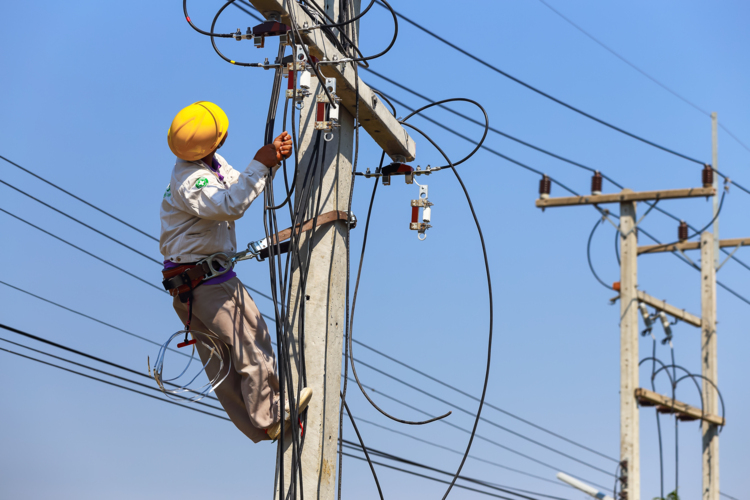 The trends that defined the wireless network industry in 2016 are all still in play in 2017. While that might sound like more of the same, it can also be thought of as a prelude to 5G. Now is the time when mobile network operators (MNOs) are laying the groundwork for the future while monetizing and managing their investments from the past. The trends of densification, virtualization and optimization are how they will do so.
The trends that defined the wireless network industry in 2016 are all still in play in 2017. While that might sound like more of the same, it can also be thought of as a prelude to 5G. Now is the time when mobile network operators (MNOs) are laying the groundwork for the future while monetizing and managing their investments from the past. The trends of densification, virtualization and optimization are how they will do so.
Densification
The general shift in the wireless industry is from cell towers to street poles, from large-sized structures to miniaturized equipment. Densification means adding more sites where users congregate—on city streets and inside large buildings. Metro cell deployments continue to attract a lot of attention. The question is when will there be a major uptick. I expect to see a significant increase for these kinds of deployments in 2017.
The in-building wireless market continues to move from a carrier-funded to enterprise-funded model. We’ve been talking about this transition for a while, but it continues to make headway. The big challenge here is getting the MNOs and enterprises on the same page in terms of roles and responsibilities, deployment quality and other logistics. CommScope continues to strengthen our extensive partner network to better serve and empower enterprises in their wireless needs.
Densification also includes adding more spectrum to existing sites. For macro network base station antennas, we continue to place more ports on antennas (up to 8, 10 or 12 ports) to help push more capacity to existing sites. The evolution to the 4.3-10 connector size is important here. The industry is also exploring millimeter wave spectrum, which we see playing a role in fixed wireless access networks.
Virtualization
Everything is being virtualized in wireless networks. The first step toward capacity virtualization is deploying centralized radio access networks (C-RAN), which pull baseband processing into a centralized location serving multiple cell sites. A US MNO is already utilizing C-RAN to link up three macro sites and 30 metro sites across the downtown area of a major city. Fiber cabling links all of these sites. In the future, such deployments will enable true C-RAN, meaning Cloud-RAN, where network capacity can be moved around to hot spots throughout the day.
At the cell tower site, the C-RAN architecture makes it possible for operators to use smaller cabinets and platforms at the bottom of the tower because there is less equipment at the edge. CommScope now offers pre-assembled steel platforms with cabinets and generators already installed to address this market need. MNOs will hopefully enjoy some cost savings due to lower power requirements and leasing costs in the C-RAN model.
Optimization
Operators are still highly focused on controlling the user experience, and rightly so. Keeping customers happy is the core of their businesses. How to best use unlicensed spectrum is a question to be sorted out in 2017. The rudimentary first steps involved offloading traffic onto Wi-Fi, but that does not enable the quality control MNOs want. LTE-Unlicensed and License-Assisted Access make carrier-controlled use of unlicensed spectrum possible. MNOs still get the benefits of offload but can control the experience. Ultimately there will be a co-existence of Wi-Fi, other unlicensed technologies and licensed spectrum especially inside buildings. Managing spectrum to minimize network performance issues remains a mission-critical concern.
Network Convergence
Looking down the road a bit further, an emerging trend – and buzz word for last 10 years – is network convergence. It’s been talked about a lot, but I see it truly happening in 5G. Network convergence means wireline and wireless networks coming together to best serve users. Fiber networks will become more pervasive in carrying wireless network traffic, moving from the core to the network edge. The last mile can be fiber or wireless, with millimeter wave competing with fiber for short drops in the RAN. Wireless has clearly won in user preferences, but it will be a combination of wireless and fiber that links them back to the core.
None of these trends—densification, virtualization, optimization and convergence—is brand new. But 2017 will see more work being done, and more resources being deployed, for all of them. More cell sites, capacity, virtualization, spectrum and fiber will all continue. The one constant in the wireless industry is “more.” Users want more bandwidth, MNOs need more capacity, and vendors like CommScope are rushing ahead to develop more solutions. While 2017 might look like more of the same, I expect to see significant developments in laying the foundation for 5G.











